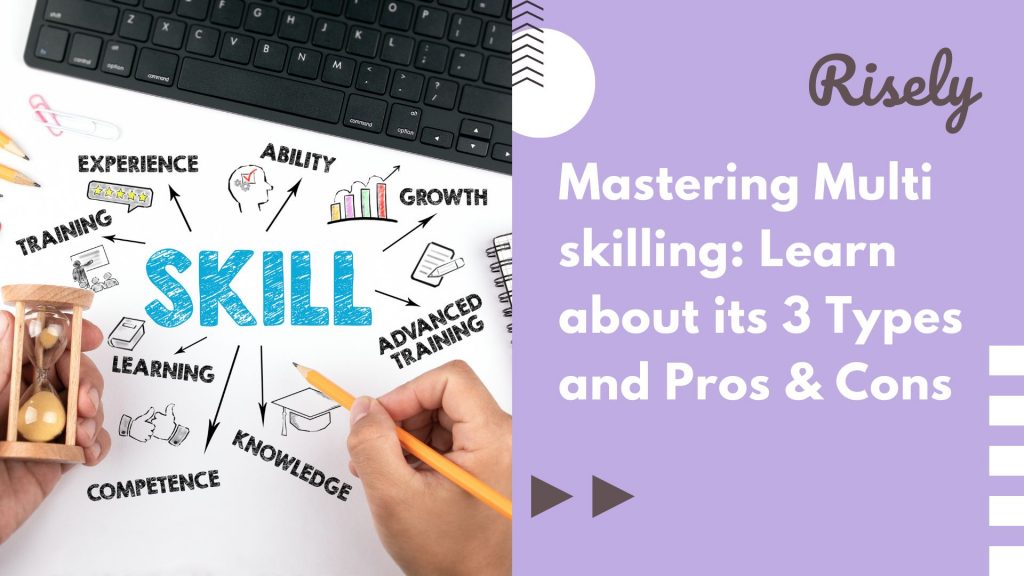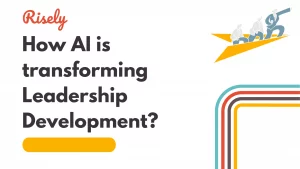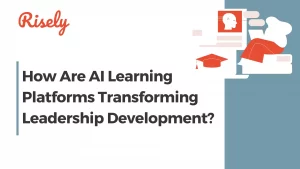In today’s fast-paced world, multiskilling is an essential skill that can give you an edge over others in your career. But what exactly is multi skilling? It is the ability to learn and perform different tasks or roles within a company. Different types of multiskilling exist, such as vertical, horizontal, and depth. In this blog post, we will dive deep into each type of multiskilling and discuss the advantages and disadvantages of mastering it. We will also provide examples of how people successfully implemented multi skilling in their careers. So if you want to improve your chances of success in your career, keep reading to master the art of having multiple skills!
What is multi skilling?
Multiskilling, also known as multi skilling or cross-skilling, refers to the practice of acquiring and developing a broad range of skills and competencies beyond one’s primary area of expertise. It involves equipping oneself with diverse abilities that enable individuals to perform various tasks and roles within a given context. In a professional setting, multiskilling can include expanding one’s skill set to encompass different work areas within an organization or industry.Types of multiskilling
A multi skilled workforce is essential in today’s world. It involves developing a range of different skills beyond your primary job role. When it comes to multiskilling, there are three common types: vertical, horizontal, and depth. Let’s explore each type:- Vertical Multiskilling: Also known as upward multiskilling or job enlargement, involves acquiring additional skills and knowledge within the same occupational level or hierarchy. It refers to expanding one’s abilities and responsibilities within a specific job or profession. For example, a software engineer who learns database administration or system analysis and programming skills engages in vertical multiskilling. This type of multiskilling aims to broaden the scope of an individual’s expertise while remaining within the same job role.
- Horizontal Multiskilling: Horizontal, lateral or job rotation, involves acquiring skills and knowledge across different job roles or organizational functions. It refers to diversifying one’s skill set to perform multiple tasks or roles at the same level or hierarchy. For instance, an employee in a manufacturing company may cross-train in various departments, such as production, quality control, and logistics. Horizontal multiskilling enhances versatility and allows individuals to contribute in different areas, facilitating collaboration and flexibility within the organization.
- Depth Multiskilling: Also known as skill expansion or deepening, involves developing a deeper level of expertise in a specific area while maintaining a broad understanding of related skills. It refers to expanding one’s knowledge and proficiency in a particular field. For example, a data scientist specializing in machine learning may develop advanced natural language processing (NLP) or predictive analytics skills. Depth multiskilling allows individuals to become subject matter experts with a solid foundation in complementary skills.
Other Interesting Reads
Advantages of multi skilling
A flexible workforce with multi-skill capabilities is a game-changer for any organization. It offers several advantages for individuals and organizations. Here are some key benefits:- Increased Employability: Multi-skilled individuals are more versatile and adaptable to changing job market demands. They possess broader skills that make them attractive to employers across different roles and industries. They are better equipped to handle new responsibilities and diverse tasks, increasing their employability and job prospects.
- Enhanced Job Security: With multiskilling, individuals become less dependent on a single set of skills or a specific job role. This diversification of skills makes them more resilient to job market fluctuations, technological advancements, and organizational restructuring. They are better positioned to transition between roles or departments within an organization, reducing the risk of job loss.
- Improved Productivity: Multi-skilled employees can perform various tasks and roles, increasing productivity within the organization. They can fill in for absent colleagues, handle workload spikes, or contribute to different projects simultaneously. This flexibility minimizes downtime, streamlines operations, and optimizes resource allocation.
- Enhanced Collaboration and Teamwork: Multiskilling fosters a collaborative work environment. When individuals possess knowledge and skills from different areas, they can collaborate effectively with colleagues from diverse backgrounds and this collaboration also helps in uncovering the hidden productivity. They can understand and contribute to various aspects of a project, promoting cross-functional teamwork and synergy.
- Efficient Resource Utilization: Multiskilling enables organizations to maximize their resources. Instead of hiring specialized employees for every task, multi-skilled individuals can handle multiple responsibilities, reducing the need for excessive staffing. This leads to cost savings and efficient resource utilization.
- Adaptability to Change: In rapidly evolving industries, multi-skilled individuals are better prepared to adapt to new technologies, processes, or market trends. They can quickly learn and apply new skills, enabling organizations to stay competitive and agile in dynamic environments.
Disadvantages of multi skilling
While multi skilling offers numerous advantages, there are also potential disadvantages that should be considered:- Diluted Expertise: Multi skilling often involves acquiring a broad range of skills, which can result in a shallower level of expertise compared to specialists who focus solely on a particular area. Individuals may not achieve the same level of mastery in each skill they acquire, which can limit their effectiveness in highly specialized tasks.
- Increased Workload and Stress: Multi-skilled employees may juggle multiple responsibilities and tasks, leading to increased workload and potential stress. Balancing diverse roles and responsibilities can be demanding, especially if proper workload management and support systems are lacking. This can impact job satisfaction and work-life balance.
- Training and Development Costs: Developing multi-skilled employees requires investment in training and development programs. Organizations must allocate resources for cross-training initiatives, including hiring external trainers or providing employees time away from their primary tasks. These costs should be considered when evaluating the feasibility and benefits of multi skilling.
- Skill Obsolescence: Rapid technological advancements and changing market demands can render specific skills obsolete. If individuals have invested heavily in acquiring abilities that become outdated, their multiskilling efforts may lose value. Regular upskilling and updating industry trends are crucial to mitigate this risk.
- Potential Lack of Specialized Roles: In organizations where multi skilling is encouraged, fewer specialized roles may be available. This could limit career progression options for individuals who prefer to specialize in a specific area rather than becoming generalists. Organizations need to strike a balance between multiskilling and maintaining opportunities for specialization.
- Reduced Focus and Efficiency: Multiskilling can lead to divided attention and reduced task completion efficiency. When individuals are responsible for multiple roles or projects, allocating sufficient time and focus to each one becomes challenging. This may result in decreased productivity and quality of work.
Multi skilling examples
A multi-skilled workforce refers to competent employees performing various tasks and acquiring new skills. Hiring this type of employee benefits companies by increasing production levels, providing a flexible workforce, reducing labor costs, and enhancing job satisfaction. Here are five examples of multiskilling:- Customer Service Representative with Technical Skills: A customer service representative with technical skills such as troubleshooting software issues, basic coding knowledge, or familiarity with IT systems. This multiskilling enables them to handle customer queries about technical problems effectively and provide appropriate solutions without transferring the call to a specialized technical support team.
- Project Manager with Marketing Skills: A project manager who develops marketing skills, such as content creation, social media management, or market research. This multiskilling allows them to not only oversee project execution but also contribute to marketing strategies, develop promotional materials, or conduct customer analysis. They can better understand marketing-related aspects of a project and collaborate effectively with the marketing team.
- Nurse with Language Skills: A nurse who acquires proficiency in a foreign language commonly spoken by the local community or a specific patient demographic. This multiskilling enables them to communicate with patients with limited English proficiency, ensuring effective care, accurate information exchange, and improved patient experience. It also facilitates cultural sensitivity and understanding.
- Software Developer with User Experience (UX) Design Skills: A software developer who learns user experience (UX) design principles, wireframing, or prototyping techniques. This multi skilling allows them to write code and contribute to the user-centered design process. They can better understand user needs, design intuitive interfaces, and collaborate effectively with UX designers, improving usability and user satisfaction.
- Sales Representative with Data Analysis Skills: A sales representative who develops data analysis skills, such as working with spreadsheets, using data visualization tools, or conducting fundamental statistical analysis. This multiskilling allows them to analyze sales data, identify trends, and make data-informed decisions. They can generate insights, track performance, and contribute to sales strategies, improving sales effectiveness and target achievement.
Conclusion
In today’s dynamic business landscape, multi skilling is becoming increasingly important. It involves acquiring additional skills beyond your core competencies that are necessary for you to perform a variety of roles within an organization. Multi skilling provides several advantages, such as increased productivity, flexibility, and better job security. However, it also has disadvantages, such as the risk of burnout and lack of specialized expertise. To master multi skilling, focus on vertical, horizontal, and depth skill development. Learn from the examples we have provided in our blog on how mastering multi skilling can lead to success in your career.Effective time management is crucial to managing your time across various tasks.
Take the free time management assessment for managers now to reinforce your skills with detailed insights.






